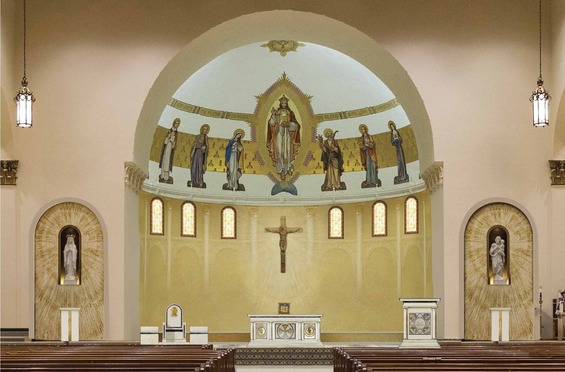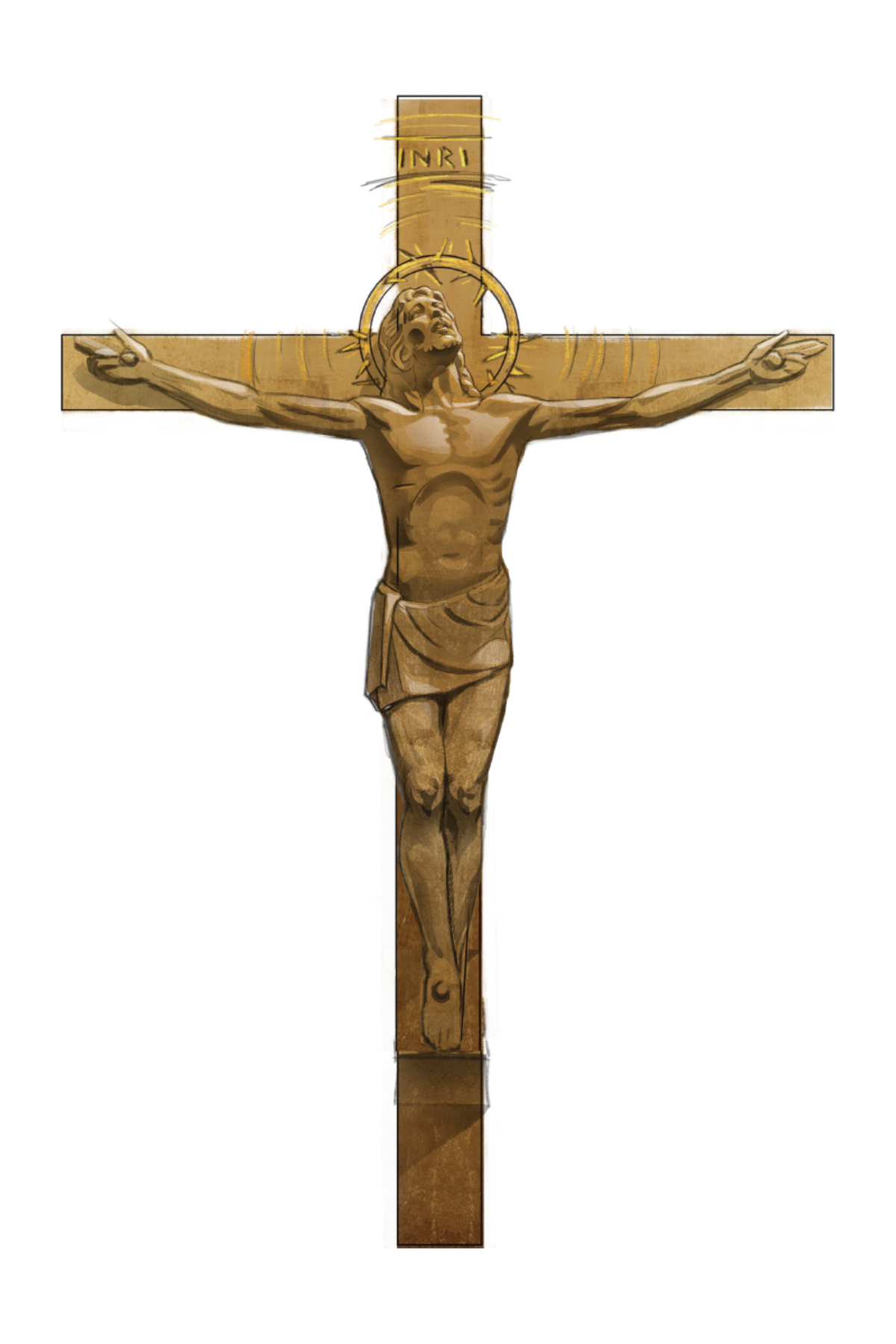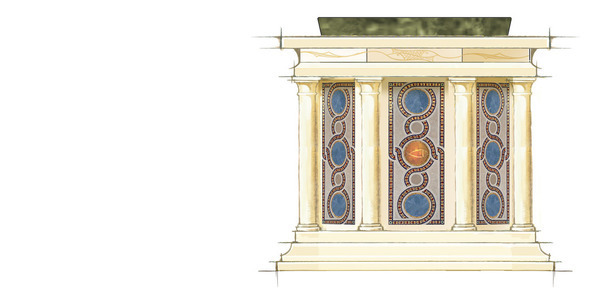Search
Putting Christ Back into the Heart of the Cathedral
-
 April 30, 2025Forty years after its last renovation, the Corpus Christi Cathedral is due for both a renovation and restoration. “The purpose of the Cathedral’s restoration and renovation is to address much-needed repairs while also enhancing and beautifying the sanctuary and other sacred areas,” says Bishop Michael Mulvey.
April 30, 2025Forty years after its last renovation, the Corpus Christi Cathedral is due for both a renovation and restoration. “The purpose of the Cathedral’s restoration and renovation is to address much-needed repairs while also enhancing and beautifying the sanctuary and other sacred areas,” says Bishop Michael Mulvey.
The timing of the Cathedral restoration and renovation goes hand in hand with the Jubilee Year 2025 and aims to similarly contribute to restoring a sense of hope and trust in the Church. In the Bull announcing the Jubilee Year 2025, our late Holy Father stated: “We must fan the flame of hope that has been given us and help everyone to gain new strength and certainty by looking to the future with an open spirit, a trusting heart and far-sighted vision.” Many proposed improvements in the Cathedral speak to this call to “fan the flame of hope” through a renewed beautification of the Cathedral sanctuary around which we gather as the People of God - all of us participating in the one sacrifice of God’s immense love on the cross (see Sacrosanctum Concilium #7).
Every object used in the Liturgy (vesture, books, vessels, candles, etc.), every focal point in the sanctuary (altar, ambo, chair, tabernacle, font, ambry, etc.), and every work of art in the church can lead us to the Divine, because Christian beauty manifests itself “as an echo of God’s own creative act” (Built of Living Stones: Art, Architecture, and Worship, no. 145), and therefore should reflect the best of our artistic heritage. The setting for the celebration of the Liturgy should be beautiful. As such, the renovated Cathedral will incorporate all new liturgical furnishings, including a new baptismal font, altar, ambo, pews, and flooring. In addition, improvements will be made to the existing lighting, an enhanced and state-of-the-art sound system, and an improved organ. All of these improvements and changes will be in accord with Catholic teaching through the guidance of Vatican documents and the Roman Missal. Great effort has been made to improve and beautify the existing sanctuary while at the same time preserving many essential elements that have always existed. The following summarizes some of the major modifications.
The Altar will serve as the focal point of the sanctuary, with new floor tiles that visually lead directly to it. The new altar will match the new ambo and new cathedra; its size will be proportional to the area of the sanctuary. The new altar exhibits prominent symbols of bread and wine to highlight the celebrant who gathers not only the bread and wine but the joining of them to Christ’s per fect sacrifice.
fect sacrifice.
The Tabernacle will be placed in the center of the apse, which responds to the desire of many people in the diocese. It will be relocated from the adoration chapel to be visible and prominent during every service and celebration.
The Crucifix - Above the tabernacle, there will be a new bronze crucifix emphasizing the moment when Je sus turned His gaze to heaven and spoke the words of Psalm 22, “My God, my God, why have you forsaken me?” This psalm ends with a declaration of God’s deliverance and victory.
sus turned His gaze to heaven and spoke the words of Psalm 22, “My God, my God, why have you forsaken me?” This psalm ends with a declaration of God’s deliverance and victory.
The Ambo - To highlight the importance of the Word, a new ambo will be installed to the right of the altar , replacing the current wooden lectern. The Bishop’s chair will be positioned to the side, as is customary in nearly every Catholic cathedral, giving central focus to Jesus on the cross and in the tabernacle.
, replacing the current wooden lectern. The Bishop’s chair will be positioned to the side, as is customary in nearly every Catholic cathedral, giving central focus to Jesus on the cross and in the tabernacle.
The Baptismal Font, currently located to the left of the altar, will be moved to the Cathedral entrance. “It symbolizes our spiritual pilgrimage - we enter the Church through baptism and then proceed toward the altar, where we receive Jesus’ Body and Blood,” says Bishop Mulvey.
In the side chapel that now houses the Tabernacle, the Pietà from the entrance—often overlooked by many—will find a new home as a space for quiet prayer.Two confessionals will be remodeled for the Sacrament of Penance; they will be relocated to the back of the Cathedral. The two existing confessionals in the front will be transformed into shrines – one in honor of Our Lady of Guadalupe, the other in honor of saints.
The entrance to the cathedral will be redesigned after the renovation of the central nave. The inner doors will be translucent, allowing natural light to illuminate the church. Three bronze portals, each representing a symbolic path, will depict three essential episodes from the Gospel: the Supper at Emmaus, the Way of the Cross, and Pentecost. They carry central Christological meanings: recognition (Emmaus), sacrifice (the Cross), and mission (Pentecost).
Improving Functionality
These modifications will greatly improve the Cathedral’s functionality. “We need to install a new sound system with modern technology,” says the Bishop. Currently, the spoken word often is not audible in the pews, particularly at the back of the cathedral. A new sound system will provide better audio quality through the use of a new sound system and accompanying acoustical treatments. The sound system will also incorporate Bluetooth technology. New LED lighting will further enhance the beauty of the sacred building.
The pews are now 80 years old and in poor condition; the disinfection process during COVID-19 has damaged the wood. The new pews include kneelers designed to move up and down quietly, minimizing distraction. Additionally, remodeled restrooms will be added at the back of the church; presently, only one men’s and one women’s restroom is available.
Meet the Liturgical Designers
Arte Poli, an Italian company based in Verona, has designed a new sanctuary that aligns with the guidelines of the liturgical constitution while enhancing our Cathedral's beauty. “We want to make the paintings stand out even more,” said Anna Pighi, Export Manager of Arte Poli, who met with Bishop Mulvey in Rome to discuss this project before visiting Corpus Christi in November. A glass mosaic will accompany the new Tabernacle and cross in the apse, positioned below the fresco depicting Jesus, Mary, Joseph, and the apostles, along with the statues of Mary and St. Joseph on the s ide altars. The company has an impressive portfolio of credentials both in Italy and abroad; Bishop Mulvey had seen their work at St. John Lateran Basilica.
ide altars. The company has an impressive portfolio of credentials both in Italy and abroad; Bishop Mulvey had seen their work at St. John Lateran Basilica.
Albano Poli, the father of the current director, Paolo Poli, founded Studio Progetto Arte Poli. After attending art school, he initially concentrated on stained glass windows but later broadened his skills to include various techniques in his studio, such as frescoes, mosaics, painting, woodwork, sculpture, and wrought iron restoration. “He aimed to recreate the concept of the Renaissance workshop, emphasizing hands-on work,” explains Anna. To this day, all their projects are handcrafted, contributing to the unique appeal and beauty of their work.
Future plans and funding
After the renovation of Emmanuel Chapel in 2024, the Cathedral's interior will be the next phase of a plan to enhance its spiritual life while honoring tradition and history. The work will not stop there: both parking lots require renovations, the old school building needs to be rebuilt, and plans are underway to improve external lighting and security. More details will be shared in the coming months.
The new website https://cathedralrenovationcc.com/ offers more information about the renovation and provides regular updates. Manufacturing of the new liturgical elements has already begun in Italy. Local contractors will handle the renovation and installation. The Cathedral will close at the end of May while the Emmanuel Chapel will remain open. The rededication is scheduled for the end of 2025 or the beginning of 2026.
This project will be funded by a generous donation from the Kenedy Memorial Foundation. In addition, individuals and organizations inside and outside our community can contribute to the renovation.
